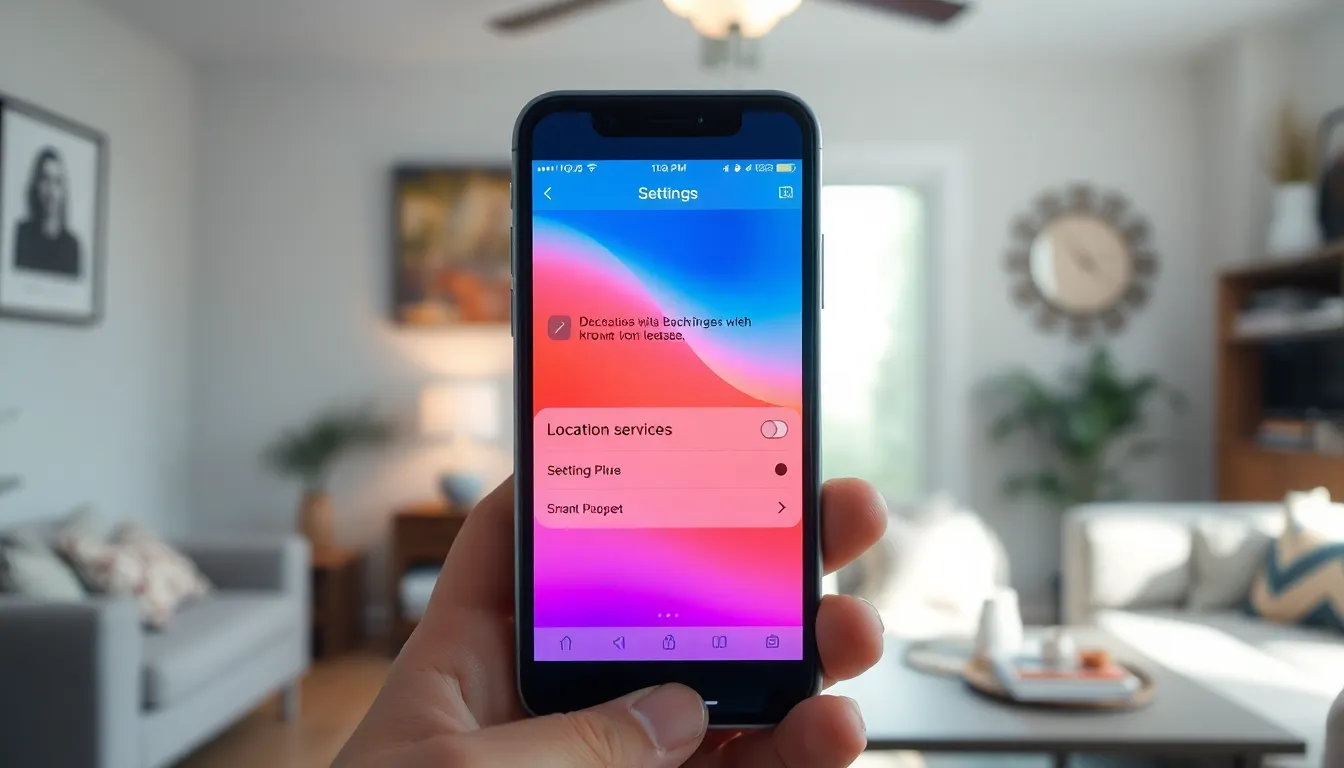Picture this: you’ve lost your iPhone, and panic sets in. You check your pockets, your couch cushions, even that mysterious place in your fridge where you once found a half-eaten sandwich. But wait—what if the location’s off? Can you still track it down?
Table of Contents
ToggleCan I Find My iPhone If Location Is Off?
Finding an iPhone without location services can pose a challenge. Apple’s “Find My” service relies on accurate location tracking to locate lost devices. If location settings are off, the chances of pinpointing the iPhone diminish significantly.
Users can still attempt to locate their iPhone through the following methods:
- Check iCloud: Access iCloud.com and log into your Apple ID. The “Find iPhone” feature displays all connected devices, showing the last known location when location services were active.
- Use Sound: If the iPhone is nearby, consider playing a sound through the “Find My” app. This option works even if the location is off, as long as the device remains connected to Wi-Fi or cellular networks.
- Search Locally: Review common areas where you usually leave the device. While it may be inconvenient, physically searching places like your home, car, or office can lead to rediscovery.
- Refer to Notifications: If the iPhone was lost or left in a public area, check any notifications or alerts from local authorities. If someone found the device, he or she may reach out through the contact information displayed on the lock screen.
- Activate Lost Mode: If you suspect theft, enabling “Lost Mode” through the Find My app secures the device. This feature locks the iPhone and displays a message to anyone who finds it.
Understanding these alternatives proves beneficial when tracking devices without location services. While options remain limited, leveraging available tools can aid recovery efforts.
Understanding Apple’s Location Services

Apple’s Location Services provide users with accurate geographical information to track devices effectively. Knowing how these services work enhances the ability to locate an iPhone, even when location settings are off.
What Are Location Services?
Location Services comprise a set of features that use GPS, Wi-Fi, and cellular networks to determine a device’s location. iPhones utilize these services to improve accuracy for navigation applications, location-based settings, and Find My features. When activated, users can receive precise location data, aiding in finding lost or stolen devices. Alternatively, without these services, locating an iPhone remains complicated, hindering recovery efforts.
How Location Services Work on iPhones
Location Services operate through various technologies. Global Positioning System (GPS) uses satellite signals for precise location tracking. Wi-Fi networks enhance accuracy when GPS signals are weak, especially indoors. Cellular triangulation factors in nearby cell towers to provide approximate locations. The combination of these methods allows iPhones to pinpoint their location accurately, making tracking through Apple’s Find My feature more reliable. Users can adjust their location preferences in settings, influencing how these services function for different applications.
Alternative Methods to Locate Your iPhone
Finding an iPhone without location services poses challenges, but several alternative methods exist to increase the chances of recovery.
Using iCloud to Find Your iPhone
Accessing iCloud provides a valuable option for locating a lost iPhone. Users can log into iCloud.com and navigate to the Find My iPhone feature. This service will show the most recent location of the device, even if location services are turned off. Last known locations can guide users to check specific areas. They should also note that if the iPhone is offline, it may display the last available location for up to 24 hours. Additionally, activating a remote message through iCloud can alert anyone who finds the device to contact the owner.
Bluetooth and Nearby Devices
Bluetooth functionality offers another avenue for locating an iPhone. Devices may connect automatically to previously paired Bluetooth accessories. Checking these devices might reveal the iPhone’s last connection point. Users can also utilize a feature called “Find My Network,” which turns other Apple devices into tracking tools. This feature allows them to detect and locate iPhones nearby even when location services are disabled. Enabling Bluetooth is essential, as this feature assists in enhancing the chances of locating the lost device.
Tips for Preventing Loss of Your iPhone
Taking preventive measures can reduce the chances of losing an iPhone. Users can start by ensuring their location services are enabled.
Enabling Location Services
Activate Location Services to enhance the ability to find an iPhone. Access the Settings app and navigate to Privacy, then Location Services. Here, users can enable the service for essential apps, including Find My. Accurate location tracking relies on GPS, Wi-Fi, and cellular data. These features increase reliability in locating devices, even if they are temporarily offline. Regular maintenance of location settings ensures optimal performance.
Utilizing Find My iPhone Features
Utilize the Find My iPhone features for better tracking options. Users should enable “Find My iPhone” within their iCloud settings. When activated, this feature allows the device to display its location on a map. It can also send notifications for updates and changes in location. Playing a sound utilizes this function to locate the device quickly in nearby spaces. Enabling “Lost Mode” secures the device and allows for a message display, improving communication with potential finders.
Finding an iPhone with location services turned off presents a unique challenge. While the chances of pinpointing the device are limited, users still have several options to explore. Checking iCloud for the last known location can provide valuable information. Utilizing the “Find My” app to play a sound may help if the phone is nearby.
In addition to these methods, searching common areas and activating “Lost Mode” can enhance the likelihood of recovery. By taking proactive steps and ensuring location services are enabled in the future, users can significantly improve their chances of locating a lost iPhone.






